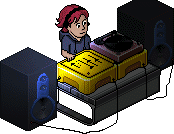Habbo Fad
Habbo Fad

Si buscas
hosting web,
dominios web,
correos empresariales o
crear páginas web gratis,
ingresa a
PaginaMX
Por otro lado, si buscas crear códigos qr online ingresa al Creador de Códigos QR más potente que existe


Libro de Visitas
Siéntete a gusto de dejarnos un mensaje en nuestro libro de visitas:
Tu Sitio Web Gratis
© 2025 Habbo Fad![]()
![]()
![]()
![]()
![]()
![]()
![]()



Et5qg
26 May 2025 - 12:14 pm
purchase prednisone generic purchase prednisone online cheap prednisone online buy prednisone ca purchase prednisone online cheap buy generic prednisone online prednisone cost
Timmymus
26 May 2025 - 12:11 pm
dark market link dark market list https://github.com/nexusurlnkukm/nexusurl
Juliusheina
26 May 2025 - 12:10 pm
darknet drug links darknet links http://github.com/abacusurlxllh4/abacusurl
Martinfak
26 May 2025 - 11:01 am
Гидравлические системы в строительной, горнодобывающей и сельскохозяйственной технике требуют особого внимания, и своевременное обслуживание и ремонт гидронасосов играют ключевую роль в их долговечности. В этой статье мы рассмотрим ремонт гидронасосов таких брендов, как Rexroth, а также запчасти и важные аспекты замены и восстановления насосов CAT.
Обслуживание гидронасосов и гидромоторов: необходимость этих процедур
Гидронасосы находятся под интенсивными нагрузками в процессе эксплуатации, что может привести к их износу или поломке. Восстановление гидронасосов — это критическая часть профилактики, которая позволяет продление срока службы оборудования. Своевременная замена комплектующих для насосов — это важный шаг в поддержании эффективности системы.
Запчасти для гидронасосов Caterpillar
Гидронасосы Caterpillar известны своей прочностью и выносливостью в самых сложных условиях эксплуатации. Для того чтобы обеспечить долговечность гидронасосов, важно использовать только оригинальные комплектующие для насосов Caterpillar. Это включает ремкомплекты, которые гарантируют надежную работу устройства.
Насосы Rexroth и их запчасти
насос sauer danfoss
Bosch Rexroth является одним из самых популярных брендов в производстве гидравлического оборудования. Их насосы широко используются в строительной и машиностроительной отраслях. Для ремонта насосов Rexroth используются оригинальные детали, такие как напорные элементы и крышки насосов. Эти комплектующие гарантируют надежную работу насосов, поддерживая их долговечность.
Запчасти для насосов Sauer Danfoss: ремонт и обслуживание
Гидронасосы Danfoss — это один из самых надежных выборов для промышленного использования, включая строительные машины. Они обладают высокой производительностью и надежностью даже в самых тяжелых условиях. При ремонте насосов Sauer Danfoss используется весь спектр запчастей, таких как втулки и крепежные детали.
Где купить запчасти для гидронасосов Rexroth, Sauer Danfoss и CAT
Чтобы поддерживать работу вашего гидравлического оборудования в оптимальном состоянии, необходимо использовать оригинальные запчасти. На сайте https://mini-pogruz4ik.ru/ вы можете найти все необходимые детали для гидронасосов CAT. Мы предлагаем только проверенные компоненты, что обеспечивает долговечность и надежность вашего оборудования.
Ремонт и обслуживание гидронасосов — это важные процессы, которые помогают продлить работоспособность вашего оборудования. Для надежной работы гидравлических систем необходимо использовать только проверенные комплектующие. Если вам требуются качественные запчасти для гидронасосов Rexroth, обратитесь к нам на https://mini-pogruz4ik.ru/, и мы поможем подобрать все необходимые компоненты.
bosch rexroth
Dayzserverol
26 May 2025 - 10:33 am
Хотите найти лучший PvE сервера Дейз?
Мы предлагаем реалистичный сервер Deadly Storm Deerisle с картой Deerisle, где каждый момент — вызов для игроков.
Если вы только начинаете, попробуйте лайтовый сервер с картой ChernarusPlus (Lite), где идеальные условия для старта.
PVE сервера dayz — это наш проект для всех игроков.
Погружайся в мир Deerisle с уникальными механиками: суровые условия выживания и продвинутый крафт.
Ощути комфорт и простоту игры с ChernarusPlus.
Заходи прямо сейчас на топовые сервера Дейз!
Погружайся в PvE мир, где дружба важнее всего.
Ссылки для подключения:
игра дейзи на телефон vk.com/deadly_storm_syberia_dayz
https://pve-dayz.wargm.ru/server/65805 dayz сервера без модов
Nikkyoxisk
26 May 2025 - 10:16 am
darknet markets url dark web market https://github.com/abacusmarketlinkcy3tq/abacusmarketlink
Toddyoxisk
26 May 2025 - 10:15 am
darknet drugs dark web sites https://github.com/abacusmarketurlriw76/abacusmarketurl
Franktrign
26 May 2025 - 10:12 am
darknet market links darknet market list https://github.com/nexusurlnkukm/nexusurl
Franktrign
26 May 2025 - 10:07 am
darkmarket dark web sites https://github.com/nexusdarknetmarket4h9tw/nexusdarknetmarket
Juliusheina
26 May 2025 - 09:57 am
darkmarkets darknet websites https://github.com/tordrugmarketze24o/tordrugmarket